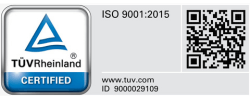Hot and Cold Chamber : Things to consider while buying!
The hot and cold chambers are designed to withstand the testing of certain samples in a cold or hot environment. They are designed in a certain way to control temperatures and stabilize them to some extent. Die casting is a process that is carried out mainly with heat and cold chambers.
The equipment used in the industry for testing is generally large scale. It takes a lot of research and development from the end of the buyer to make the right decision regarding the seller, the type of camera and the background of the seller. Here are some things you can consider when buying a hot and cold camera:
Temperature control
The temperature control is the most used function of the hot and cold chamber and basically controls all the controls and features. It is definitely of the utmost importance to test whether the camera has a stable temperature control system. It is also important to know if the camera can meet the requirement of its tests and the temperatures required to perform those tests. Once this has been solved, the testing process is almost finished. This should give you an idea of how important temperature control is for a hot and cold chamber.
Capacity and technical data.
The size of the camera can be modified during manufacturing by most suppliers according to the size and volume requirements of the customer. Most cameras offer a high uniform load capacity with a maximum of 100 kg. The test space comes in several volumes ranging from 120 liters to 1000 liters. This gives you a flexibility to perform several tests. Most suppliers provide humidity of up to 95% RH as standard, so stay tuned. Some suppliers also provide 98% of HR at the customer’s special request.
Building
The function and service of a camera can be affected by various environmental factors during delivery, construction / manufacture and storage. To define this feature, you must be well versed in the test you must perform with the camera; Only then will you know the requirement of the dimensions of the camera that will help you decide the size of the camera. Also keep a check of the inner surface and the outer surface of the camera, you should also keep in mind if they are polished; If so, then if the enamel meets the requirements of the tests or not.
Factory calibrated
Make sure that the camera you are going to reach is calibrated at the factory. This can be reported using a Pt 100 resistance thermometer according to 1/3 DIN to measure temperature and a 1/3 DIN resistance thermometer with cotton wick to measure humidity or a capacity humidity sensor. Once a camera is calibrated at the factory, which means that it has passed all the basic checks and tests set by the manufacturer, it guarantees a very high reaction time for the entire system.
Adhere to guidelines
And finally we arrived at the safety guidelines. They are the very basic premise of the cameras and laboratory instruments, so it is important to select a camera that meets the guidelines. Make sure that the camera has passed the stability tests according to the ICH guidelines and climatic tests in which the camera’s climate does not change unless it is applied manually.
Buying a camera for testing in a laboratory is definitely not an action that is as frequent as buying groceries, so be sure to do the right research and make the right decision.

We deal with
Environmental Simulation Products
BOD Incubator
Cold Chamber
De Humidifier
Deep Freezers
Dust Chambers
Growth Chambers
Hot and Cold Chambers
Hot air Oven Chambers
Humidity Chambers
Reach in Growth Chambers
Salt Spray Chambers
Solar Chambers
Stability Chambers
Thermal Shock Chambers
Tray Dryer
Walk-in Cold Chambers
Walkin Environmental Chambers
Walkin Hot and Cold Chamber
Water Heated Jacket Oven



Leave a Reply